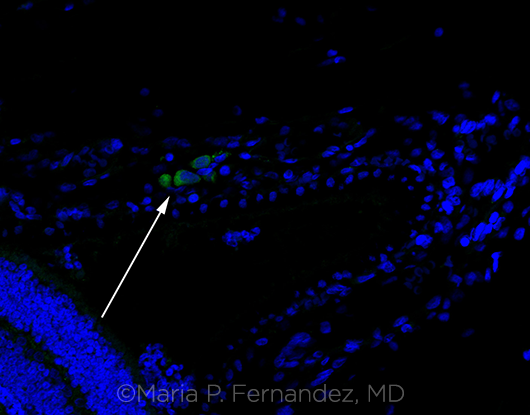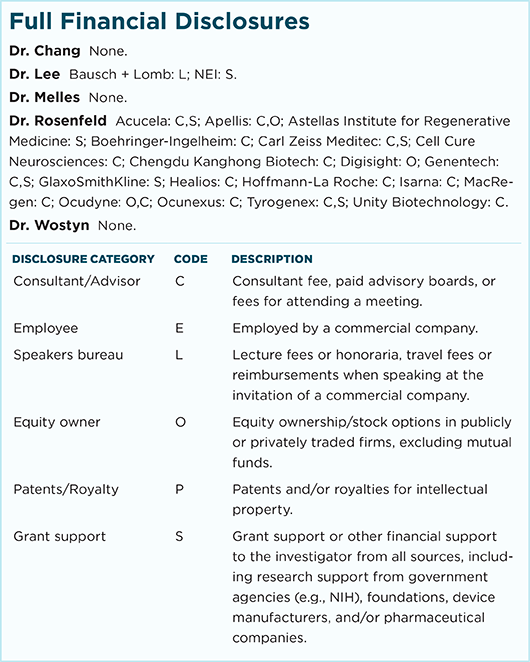Download PDF
Researchers at the Bascom Palmer Eye Institute in Miami have discovered the extensive reach of the Zika virus (ZIKV) inside the eye, the totality of which suggests possible increased risks for glaucoma, uveitis, and retinal atrophy.1
The cellular level. For this observational case series, the researchers evaluated thin samples of ocular issue from 4 deceased fetuses previously diagnosed with congenital Zika syndrome (CZS) at the National Institute of Health in Colombia. Using scanning laser confocal microscopy and immunostaining with a ZIKV protein antibody, the team identified—for the first time—the viral localization within ocular tissue. They found remnants of the virus in the iris, neural retina, choroid, and optic nerve.
In addition, the researchers identified a number of changes, including thinning of the retinal pigment epithelium and choroid, optic atrophy, immature anterior chamber angles, and chronic inflammation.
“Unlike conventional histology with dyes, scanning laser confocal microscopy allowed us to assess—to a much finer degree—exactly what cell types the virus was infecting,” said Richard K. Lee, MD, PhD. “Knowing these affected cell types can allow us to put together a pathophysiological explanation for ZIKV infection and how it causes vision and eye problems.”
 |
ZIKV. Positive ZIKV immunofluorescence staining of cells (arrow) within the choroid.
|
Informing care. “This more complete understanding of the histology of CZS also suggests that, for infected patients, ophthalmologists should examine specific aspects of the eye for increased risk of ocular disease,” said Dr. Lee. They should be especially careful to look for the following.
Retinal disease. Any thinning of the retinal pigment epithelium and choroid along with loss of pigment in the patient could be a precursor to more significant retinal disease in the future, including retinal atrophy.
Glaucoma. The presence of congenital pupillary membranes and immature anterior chamber angles with ZIKV particles present in the optic nerve might suggest a greater risk of developing glaucoma.
Uveitis. Ophthalmologists should also be on the lookout for ZIKV particles in blood vessels. Along with pupillary membranes and inflammatory ocular changes, these findings might serve as a marker for increased risk of virally induced uveitis.
The Bascom Palmer team has plans to continue their research on CZS to aid in future treatment approaches, including vaccine development and pharmacotherapy.
—Mike Mott
___________________________
1 Fernandez MP et al. JAMA Ophthalmol. Published online Sept. 21, 2017.
___________________________
Relevant financial disclosures—Dr. Lee: None.
For full disclosures and disclosure key, see below.

More from this month’s News in Review